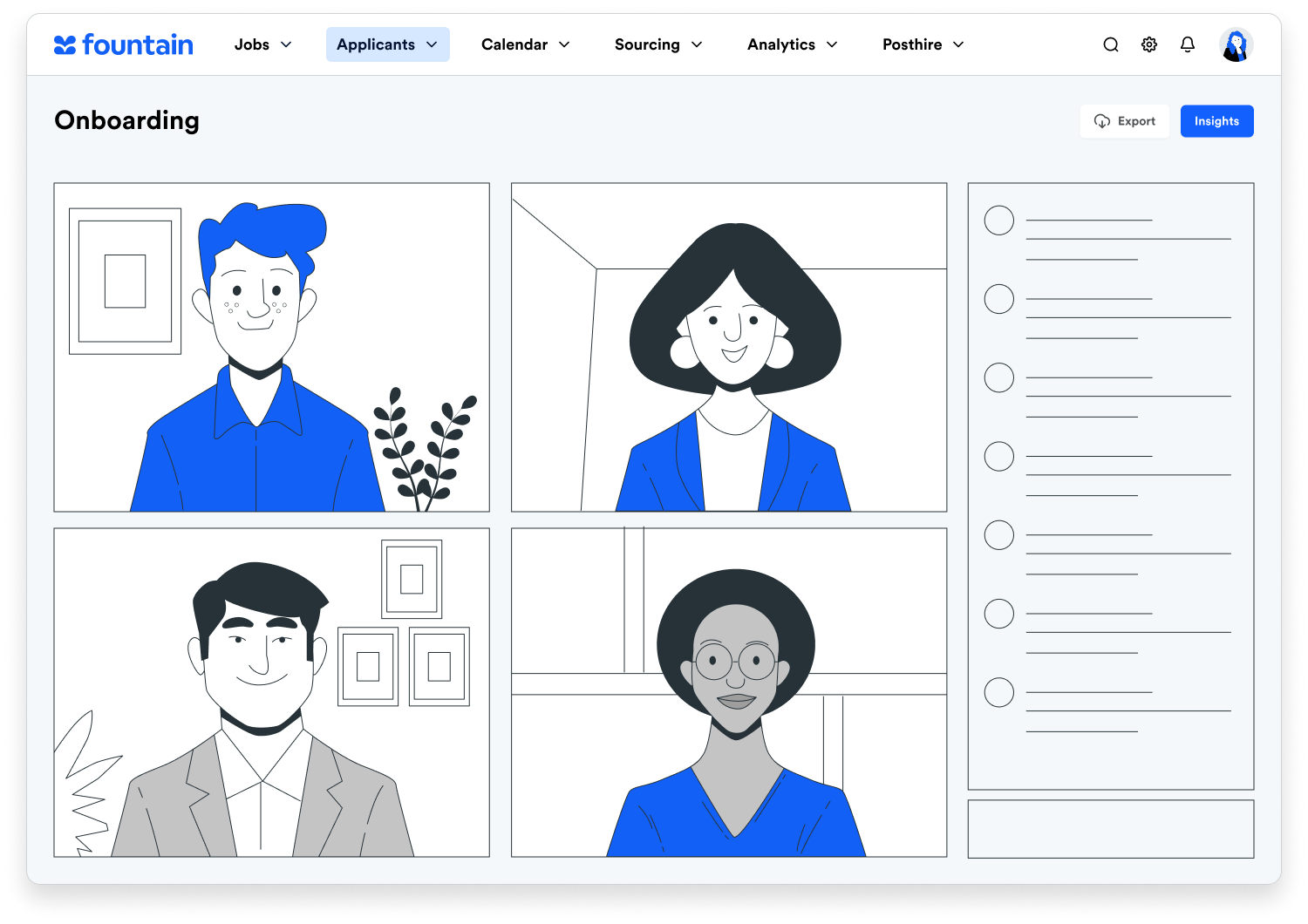Data is an essential component of recruiting every talent acquisition leader needs to track, in order to speed up their recruiting process and successfully hire more people. Knowing where to start can be the biggest challenge.
What does it mean to be data-driven?
Being data-driven means that you are relying on data to make informed decisions. Start by collecting accurate data. You don’t have to be using a sophisticated software tool, either. While there are recruiting tracking tools that would be beneficial for this step, if you’re just getting started it could also be as simple as tracking the weekly number of applicants on an excel spreadsheet, or in a notebook. Complexity isn’t the key, getting in the habit of collecting any data is an important first step.
Once you start collecting data, you need to incorporate the results into your decision-making process. Many companies fall into the trap of collecting data, but never actually using it.
As you begin to make more data-driven decisions, you need to continue evaluating the results of the changes you’ve made. Make data-informed decisions, track the results.
As a talent acquisition leader, why should I care?
You’ll able to make more informed decisions when leveraging data. Better decision means better results for your company.
You’ll also be able to make stronger arguments when backed by data. Being specific will help you get your points across, making you more convincing internally. Whether it’s justifying an increased headcount, the cost of a sourcing tool, or even negotiating a raise, being supported by data will help your case.
In many ways being data-driven will help you more accurately predict the future. Every business deals with uncertainty. Data is able to shed some light on some of the inherent uncertainty we face. You don’t have to be a statistician, either. If you can multiply and divide two numbers, you’re more than equipped to start making a difference in your organization!
In any capacity, your journey starts with questions.
I must hire 10 workers. How many applicants will I need to reach this goal? This is an important question because getting applications takes time, effort, and money. If we solicit too many, maybe we’re using too many resources. If we don’t spend enough, maybe we’re not reaching our hiring goals.
An employee just informed me that they will be leaving next week. Can I expect to fill this position by the time they leave? Start by looking at your companies average time to hire for this position, which should give you an accurate estimate.
What metrics are useful in hiring?
What quantities do hiring managers care about? There are a lot of metrics you can measure, but here is a high-level shortlist:
- Number of (good) hires
- Cost
- Time
- Effort
Every company cares about these in some capacity but might care about one more than the other. Here are a few key metrics we track at Fountain around hires, cost, and time.
The main hiring metric you’ll track is your hiring rate.
- Hire Rate = # of hires / # of applicants
I need to hire 10 people, how many applicants am I actually going to need? The hire rate will give you some idea of that. This isn’t a universal number for your company. These numbers will change over time, with context.
Another key hire metric is your stage conversion.
- Stage Conversion = # of applicants into the stage / # of applicants out of the stage
The hiring process is broken up into discrete stages. One thing we look at is how many applicants started in a specific stage, versus how many made it out of that stage. It gives us an indication where the drop-off may be if we’re having trouble getting applicants all the way through the process.
The two main cost metrics you’ll want to look at are the cost per applicant and the cost per hire.
- Cost per applicant = $ spent on hiring / # of applicants
- Cost per hire = $ spent on hiring / # of hires
It’s important to note that what you include in your spending might change depending on the context of your company. There isn’t one specific benchmark you should be looking to achieve.
The main timing metric you’ll want to look at is time to hire.
- Average time to hire = time total hires spent in workflow / # of hires
This is measuring how long does it actually take you to hire an applicant an average.
There are a few things to keep in mind. These metrics are not static. They change over time, and that’s exactly why they’re useful. You’ll be able to track their changes and draw analysis from there.
These metrics are interrelated. For example, the number of applicants is used in a number of the prior equations. If that number changes, it’s going to adjust a lot of your data sets.
Take a holistic view; don’t put all your faith into one number or metric. These numbers come with context. If one changes, focus on “why” it’s changing.
Steps towards becoming data-driven
We can make better decisions if we’re tracking data. Appearances can be deceiving and our gut instinct isn’t always the best course of action.
What do you need to get here? There are three simple steps.
First, you need to try! Start tabulating these metrics, whether it’s in a notebook, excel, Fountain, or any other software.
Second, start looking at your data when making decisions. If you’re going to take the time and effort to track the metrics, try to think through some kind of analysis.
Third, after you’ve made the decisions, track how they work and how they change over time. If you’re starting to see improved metrics, great. The changes worked. If not, re-evaluate the data set and see where you went wrong in your analysis.

